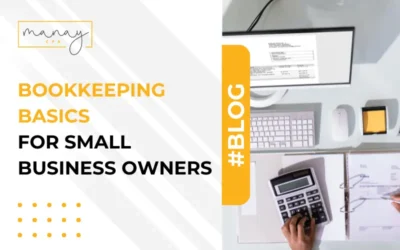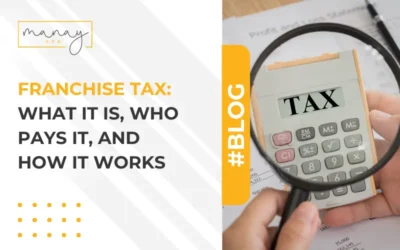What is a W-4 Form? A Comprehensive Guide to Filling Out Your W-4

For tax planning purposes, understanding how to accurately fill out the W-4 form can significantly impact your tax withholdings and ultimately, the amount of your annual tax return. Employed individuals are required to complete it yearly based on their financial situation so that the employer can withhold the correct amount of federal income tax from their pay. This guide helps you understand the components of the W-4 form and how to accurately fill it out, potentially optimizing your taxes.
Table of Contents
ToggleUnderstanding the W-4 Form
The W-4 form is a tax document filled out by employees informing their employers what portion of their federal income tax to withhold from their paychecks. It’s basically a communication tool between you and your employer. It consists of several sections designed to capture different aspects of your financial situation – for tax purposes. Here are the details you’ll need to fill our in the W-4 form:
- Personal Information
- Income details: If you have more than one job or your spouse works, you’ll need to adjust the withholding to avoid over or underpaying taxes.
- Number of Dependents: If you have dependents, you can claim allowances you provide for them. The higher the allowances you claim, the less tax will be withheld from your paycheck. We’ll discuss this in depth later in this guide.
- Other Adjustments: This is where you specify additional amounts to be withheld from each paycheck. It can be used for various purposes, such as extra withholding for additional income or deductions.
Why is the W-4 Form Important?
The W-4 form helps to determine how much money is to be withheld from your paycheck for federal income taxes. At its core, the W-4 form is important for managing your taxes efficiently, ensuring you avoid potential financial pitfalls.
Here’s why it’s so important:
Accurate Tax Withholding
Filling out your W-4 accurately ensures that you’re withholding the correct amount of taxes. Over-withholding means you’ll receive a refund, but you’re essentially giving the government an interest-free loan. Under-withholding can lead to a large tax bill come tax season.
Customized to Your Situation
The W-4 form allows you to tailor your tax withholding to your specific financial situation. It allows you to account for multiple income sources, dependents, and other factors that affect your tax situation. An accurate W-4 form ensures that your employer withholds an amount that aligns with your current financial circumstances.
Avoiding Penalties
The IRS imposes a penalty for underpayment of estimated personal income tax. And this is bound to happen if not enough tax is withheld from your income throughout the year. Accurately filling out the W-4 form ensures your tax liability better and adjusts your withholdings accordingly.
Allows for Regular Updates
Naturally, your financial situation can change over time due to life events like marriage, having a child, or getting a second job. The W-4 form can be updated as often as necessary to reflect these changes, ensuring that the right amount of tax is always being withheld.

How to Obtain a W-4 Form
Obtaining a W-4 form is a straightforward process – here’s how you can get one:
- From the IRS: You can download and print a W-4 form from the official IRS website.
- From Your Employer: Your employer is obligated to provide you with a W-4 form to complete when you start a new job. If you need additional forms or want to make changes, you can request them from your HR department.
- From a Tax Professional: If you’ve contracted the services of tax professionals, they will provide digital W-4 forms for you to fill out.
- Tax Preparation Software: If you use tax preparation software like TurboTax or H&R Block, they often provide a digital W-4 form as part of their services.
Filling Out Personal Information
Completing the personal details on the W-4 form is the first step in the process. Here’s a step-by-step guide:
- Name: Your full legal name as it appears on your Social Security card.
- Address: Use your current mailing address. If you move, update this information with your employer.
- Social Security Number (SSN): Your SSN is a crucial identifier. Ensure that you enter it correctly.
- Filing Status: Choose your filing status – single, married filing jointly, Married filing separately, head of household, or qualifying widow(er). Note that your filing status affects your tax withholding.
Claiming Dependents on the W-4
Step 3 on the W-4 Form is where you claim ‘Dependent and Other Credits’. As we mentioned earlier, if you have dependents, you can claim them on your W-4 form, significantly impacting your tax withholdings. But who exactly qualifies as a dependent? This can either be a qualifying child or a relative. Make sure to consult tax professionals to guide you and advise who in your household is a qualifying child or relative.
Note that you shouldn’t provide any personal information about your dependents, such as their names or Social Security Numbers, on the W-4 form. All you need to do is multiply the number of your qualifying dependents and then fill in the gaps.
The W-4 form also allows you to account for extra tax credits, and these could encompass credits such as the Child Tax Credit or other tax benefits. You could review the guidelines and eligibility prerequisites for these credits to see if you qualify.
Tax Withholding and the W-4
As we’ve mentioned throughout this guide, the primary purpose of the W-4 form is to provide your employer with all the necessary information needed to calculate the correct amount of federal income tax to withhold from your paycheck. It’s designed to capture various aspects of your financial situation during a given year, including your income, number of dependents, and filing status.
How Tax Withholding Works
Depending on the information you provide on your W-4 form, your employer will estimate and withhold some amount from each of your paychecks to cover your anticipated tax liability for the year. They then send the withheld amount directly to the IRS on your behalf.
Adjusting Your Withholdings
Suppose your financial situation changes within a given tax year, and it happens that too much or too little tax is being withheld from your paycheck: you are free to adjust your withholdings by submitting a new W-4 form to your employer. If you are unsure what would warrant adjustments to your withholdings, you can always consult tax professionals. This might be necessary if, for example, you have a large amount of non-wage income (like interest or dividends from investments) or if you owe additional taxes.
Updating Your W-4 Form
It’s unlikely that your financial situation will always remain the same throughout the tax year – life changes can significantly impact your tax situation. In this case, you must update your W-4. Here’s when and why you should consider refreshing your W-4 form:
When to Update Your W-4 Form
- You get married or divorced.
- When you or your spouse start a new job or rehired
- If you get a second job
- When you get a raise
- When your employment status changes from part-time to full-time status, or vice versa
- When you move to a new state
- Birth of a child or new dependent
- When you purchase a home or have significant changes in deductions.
So, why should you update your W-4 form? Firstly, it ensures you avoid over or under-withholding and can also increase or lower the amount of tax refund you receive. And it goes without saying that an accurate W-4 ensures you avoid any IRS penalties.
Common Mistakes to Avoid
When filling out your W-4 form, it’s important to avoid common mistakes that could lead to incorrect tax withholdings. Here are some mistakes to watch out for:
-
- Not updating: Always update your W-4 form when there are significant changes in your life that impact your financial situation. Failure to update the W-4 will lead to incorrect withholding.
- Incorrect personal information: Always ensure that the personal details are accurate – an incorrect Social Security Number could lead to potential complications with the IRS.
- Incorrect calculation of dependents or other adjustments: This will lead to errors in estimating the tax credits and deductions, which results in incorrect withholdings.
- Not using the IRS withholding estimator: The IRS offers an online tool that helps you determine the right number of allowances. Not using it can lead to inaccurate withholding.
- Neglecting state taxes: Don’t forget to consider state income tax when completing your W-4. State tax laws vary, so ensure you’re withholding the correct amount for your state.
Tips for Maximizing Your Tax Benefits
Implementing smart tax strategies can help you maximize your tax benefits. Here are some tips:
Understand Your Tax Bracket
In the US, the tax system is progressive – which means individuals with higher taxable incomes pay higher tax rates, while those with lower taxable incomes pay lower rates. So, understanding your tax bracket will help you plan your finances better and optimize your taxes.
Maintain Accurate Records
Keeping accurate records of your income and expenses can help you take full advantage of all available deductions and credits.
Employ the IRS Withholding Estimator
The IRS Withholding Estimator is a valuable tool that can help you fine-tune your withholdings. It takes into account your income, filing status, dependents, and other factors to suggest the appropriate amount of tax to withhold.
Annual Review
As we’ve mentioned throughout this guide, it’s important to review your W-4 form annually, especially if you experience significant life changes such as marriage, the birth of a child, or a change in income. This ensures that your withholdings accurately reflect your current financial situation.
Plan for Additional Income
If you have a significant amount of non-wage income, consider having extra tax withheld from your paycheck or making estimated tax payments.
Consult a Tax Professional
Everyone’s tax situation is unique; these strategies should be tailored to fit your circumstances. And at the end of the day, nothing beats the guidance from tax professionals. They’re always up-to-date with state and federal tax laws and are better suited to help you maximize your tax benefits.
Frequently Asked Questions (FAQs)
Where can I get the W-4 Form?
You can download the W-4 form from the IRS website, get it from your employer, a tax professional, or online tax preparation software.
Can I change my W-4 form during the year?
Yes. You can update your W-4 form any time there’s a material change in your financial situation.
What happens if I don’t submit a W-4 form to my employer?
If you don’t submit a W-4 form, the IRS mandates that your employer withhold taxes as if you are single with no adjustments. This may not accurately reflect your tax situation.
If I have multiple jobs, do I file multiple W-4 forms?
Yes. If you have multiple jobs, you must fill out a W-4 form for each employer. But you only need to include the extra amount to withhold on one of the forms. The IRS recommends either splitting your allowances between the W-4 forms for each job or claiming all your allowances with one employer and none with the other.

Published on: 04 October 2023
Last updated on: 05 August 2024
Manay CPA is a reputable, full-service CPA firm based in Atlanta, Georgia. Founded in 2001, we provide comprehensive accounting and tax solutions to individuals and businesses across all 50 states.





